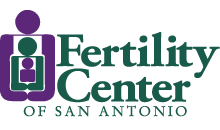Discover your path to parenthood today.
Laser-assisted Hatching
Older women, and women who have experienced multiple in vitro fertilization (IVF) failures, may benefit from laser-assisted hatching techniques at our San Antonio, TX, fertility center. Before an embryo can implant into the lining of your uterus, it must “hatch” from its outer shell, called the zona pellucida. As women age, these outer shells may harden, making it more difficult for the embryo to break through. Many clinicians believe that creating an opening in the shell can help the embryo’s chances of hatching and becoming implanted into the lining of your uterus. Our doctors prefer to use a high-tech soft-tissue laser, which allows for very precise treatment.
How Laser-assisted Hatching Works
Some assisted hatching techniques utilize mechanical force or a light acid solution to create weak spots in the embryo’s shell. Instead, our embryologists utilize and innovative microlaser for safer, faster, and more precise assisted hatching. The process involves firing a few concentrated pulses from the laser at the embryo’s outer shell, far away from the embryo to reduce the risk of cellular damage. Laser assisted hatching techniques only take a few seconds per embryo, lessening the amount of time that each one is exposed outside of its incubator. Since the embryos’ protective shells are weakened, you may be given antibiotics to help prevent infection.
When performed by an experienced embryologist, laser-assisted hatching can help those who may otherwise have difficulty conceiving due to embryos with abnormally thick shells.
Candidacy
Laser assisted hatching can help bolster your embryos’ ability to implant into your uterine lining, though it may not be preferable for every IVF procedure. Several factors should be taken into consideration before laser assisted hatching is recommended, including:
- Advanced maternal age (over 35)
- Elevated levels of follicle stimulating hormone (FSH)
- Previous IVF procedures where embryos failed to implant (but were otherwise in good health)
- Poor embryo quality
- Endometriosis, a condition in which cells from the uterine lining appear outside of the uterus
We will conduct a thorough analysis to determine if assisted hatching is the right solution for your needs.
Benefits and Risks of Laser-assisted Hatching
When performed by an experienced embryologist, laser-assisted hatching can help those who may otherwise have difficulty conceiving due to embryos with abnormally thick shells. In fact, the use of a laser further reduces the risk of complications when compared to assisted hatching using mechanical force or an acidic solution.
However, it is important to understand that the procedure does pose some risks. Most notably, the embryo could become damaged during the procedure, destroying the embryo or resulting in identical twins or birth defects. The best way to minimize these risks is to trust your care to an experienced practice with a track record of successful outcomes. To date, our patients and their children have not experienced any adverse effects as a result of laser-assisted hatching.
Schedule a Consultation Today
Our goal is to help you overcome your infertility issues, whatever they may be, so that you can realize your dream of building a family. With over 30 years of experience and dedication in providing assisted reproductive services, Drs. Martin, Neal, Retzloff, and Pool stay abreast of the latest infertility treatments and techniques to ensure our patients receive high-quality, personalized care. To learn more about laser assisted hatching, IVF, and our other effective fertility procedures, schedule a consultation by calling or visiting the Fertility Center of San Antonio today.











